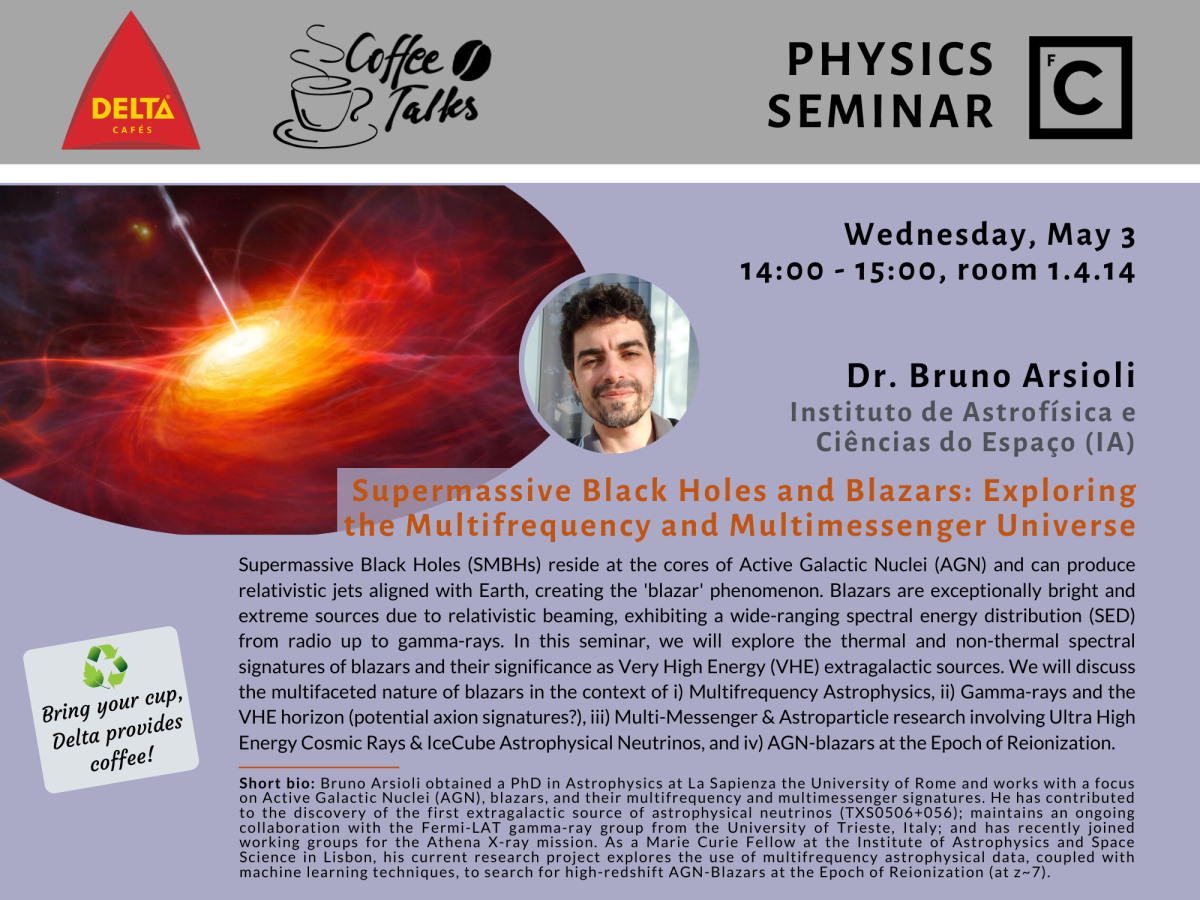Por Bruno Arsioli (Instituto de Astrofísica e Ciências do Espaço).
Supermassive Black Holes (SMBHs) reside at the cores of Active Galactic Nuclei (AGN) and can produce relativistic jets aligned with Earth, creating the 'blazar' phenomenon. Blazars are exceptionally bright and extreme sources due to relativistic beaming, exhibiting a wide-ranging spectral energy distribution (SED) from radio up to gamma-rays. In this seminar, we will explore the thermal and non-thermal spectral signatures of blazars and their significance as Very High Energy (VHE) extragalactic sources. We will discuss the multifaceted nature of blazars in the context of i) Multifrequency Astrophysics, ii) Gamma-rays and the VHE horizon (potential axion signatures?), iii) Multi-Messenger & Astroparticle research involving Ultra High Energy Cosmic Rays & IceCube Astrophysical Neutrinos, and iv) AGN-blazars at the Epoch of Reionization.
Short bio: Bruno Arsioli obtained a PhD in Astrophysics at La Sapienza the University of Rome and works with a focus on Active Galactic Nuclei (AGN), blazars, and their multifrequency and multimessenger signatures. He has contributed to the discovery of the first extragalactic source of astrophysical neutrinos (TXS0506+056); maintains an ongoing collaboration with the Fermi-LAT gamma-ray group from the University of Trieste, Italy; and has recently joined working groups for the Athena X-ray mission. As a Marie Curie Fellow at the Institute of Astrophysics and Space Science in Lisbon, his current research project explores the use of multifrequency astrophysical data, coupled with machine learning techniques, to search for high-redshift AGN-Blazars at the Epoch of Reionization (at z~7).


